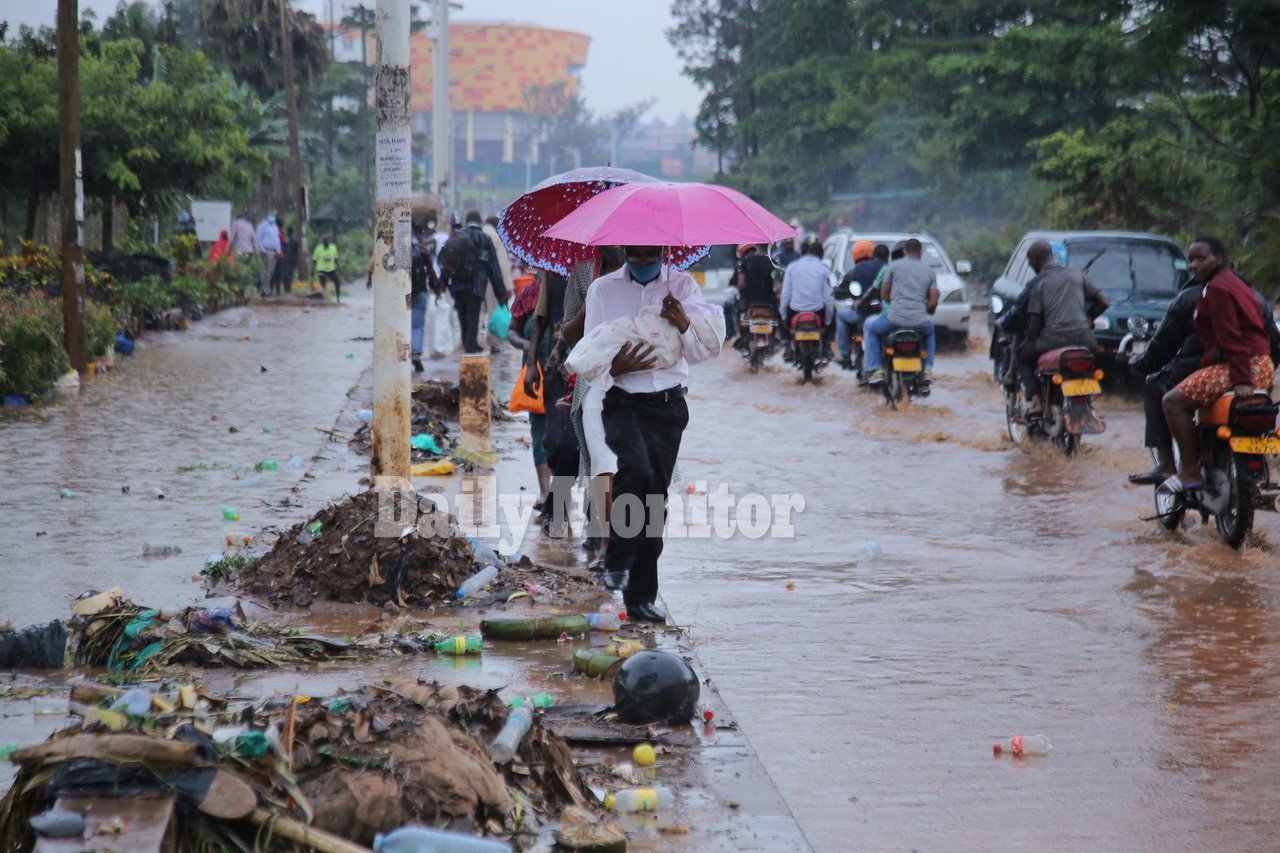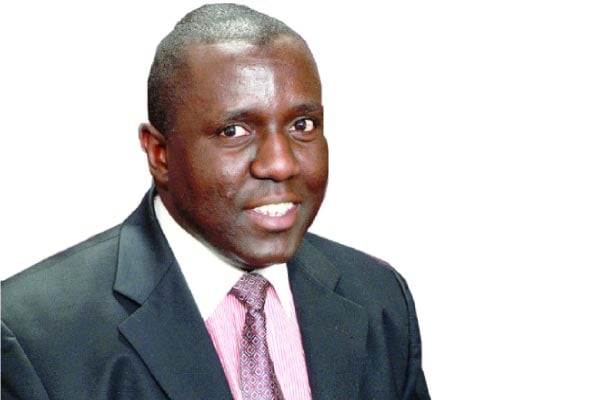Not all lost after year of extreme weather events

Motorists and pedestrians wade through a flooded Mukwano Road in Kampala after a heavy downpour on October 12, 2020. PHOTO/ FILE
What you need to know:
- Government figures show that forest cover has reduced from 24 percent in 1990 to nine percent in 2015 on the back of losing about 122,000 ha annually. The Global Forest Watch indicates that in 2010, Uganda had 6.93 million hectares (Mha) of tree cover, extending more than 29 percent of its area.
Uganda’s capital, Kampala, is facing a damp Christmas with unseasonably cold temperatures, in stark contrast to the more traditionally rainy weather of years gone by.
In a statement last month, the Uganda National Meteorological Authority forecasted that “occasional rains” would pound the capital in December. Southwestern parts of Ankole and Kigezi, it added, would be met with “enhanced rainfall.”
This is but one of the shifts in weather patterns that Uganda has experienced this year. Mr Tadeo Muhindo, the former chairperson of Disaster Preparedness and Management Committee for Kasese District Local Government, says: “Floods, prolonged droughts, loss of seasons, unexpected pests and diseases” have been sounding the knell in the country for some time.
It has barely helped matters, adds Taddeo Rusoke Amooti—a senior lecturer in conservation sciences, that Uganda keeps losing its forest cover. This upsets a counterbalance where “plants take in carbon as a raw material to manufacture their own food and in return … give us oxygen.”
Put simply, forests act like carbon sinks. According to the Food Agricultural Organisation (FAO), 15.2 percent or about 2,988,000 hectares (ha) of Uganda is forested. Statistics also show that Uganda had 51,000 ha of planted forest. Between 1990 and 2010, the country lost an average of 88,150 ha or 1.86 percent per year.
According to the National Forestry Authority (NFA), stored carbon and other elements are released in various forms when forests are cut. NFA adds that if forest material decomposes under limited supply of oxygen, say under water, methane and carbon dioxide are released. The gases known to be among the major human-induced GreenHouse Gas (GHG) emissions linked to global warming effects.
“The more we cut down trees means that the carbon which is produced has nowhere to go,” Mr Rusoke says, adding that the carbon “ends up in the atmosphere and damages the ozone layer which converts into heat resulting in unpredictable seasons like erratic rainfall or long droughts.”
Indigenous trees are known to take in more carbon than their exotic opposite number. Older tree—so beloved by loggers—also take in more carbon. The old trees are typically felled and burned to address energy poverty. In fact, the 2014 Uganda national and housing census indicates that 94 percent of households in Uganda depend on firewood and charcoal for cooking.
Other options
Alternatives for charcoal such as gas don’t come cheap. According to the Cleaning Cooking Organisation, eco stoves—which use reusable volcanic rocks to cook—are gaining in traction. The volcanic rocks retain heat much longer than any other fuel. Briquettes are used as fire starters and solar is used to power the inbuilt air system that runs forced air to the stones thus increasing combustion.
Elsewhere, the Uganda National Alliance on Clean Cooking (UNACC) fronts technologies and fuels such as biogas, biomass, crop residues, electricity, ethanol / alcohol, Liquefied Petroleum Gas (LPG), natural gas / methane, charcoal, pellets / briquettes and wood.
The Electricity Regulatory Authority (ERA) encourages people to use Hydro-Electric Power, a renewable energy that comes from water.
After using 70 units, one enters a cooking profile where units go slower as an incentivised initiative to cook using electricity.
“We need to capitalise on the fact that people are not going to adapt to alternative cooking methods overnight,” Ms Sophie Kalanzi of All Green Energy told Saturday Monitor, adding: “They can’t afford electricity or gas as sources of cooking energy. Panda cookers save up to 85 percent of the energy needed in cooking. This means that 85 percent of charcoal and firewood shall be saved.”
Cleaning things up
A number of residents in Uganda are pursuing cleaner energy options.
Mr David Baguma, a farmer, uses biogas energy generated from cow dung waste from his cattle to power his house and also cook meals.
He isn’t harbouring plans of acquiring hydroelectricity.
Elsewhere, Br Godfrey Lutaaya—the head teacher of Mugwanya Preparatory School, Kabojja—opted to invest in the more sustainable biogas usage for cooking and he has not looked back since.
FAO through the Climate-Resilient Livelihood Opportunities for Women Economic Empowerment project is setting up 200 Flexi-Biogas systems to increase the use of biogas.
This is music to the ears of the NFA that sees a number of rich rewards in Uganda’s forest cover being left untouched. Functional solutions in the face of changing weather patterns might yet not be out of reach. Only then will December not look out of kilter weather-wise.





